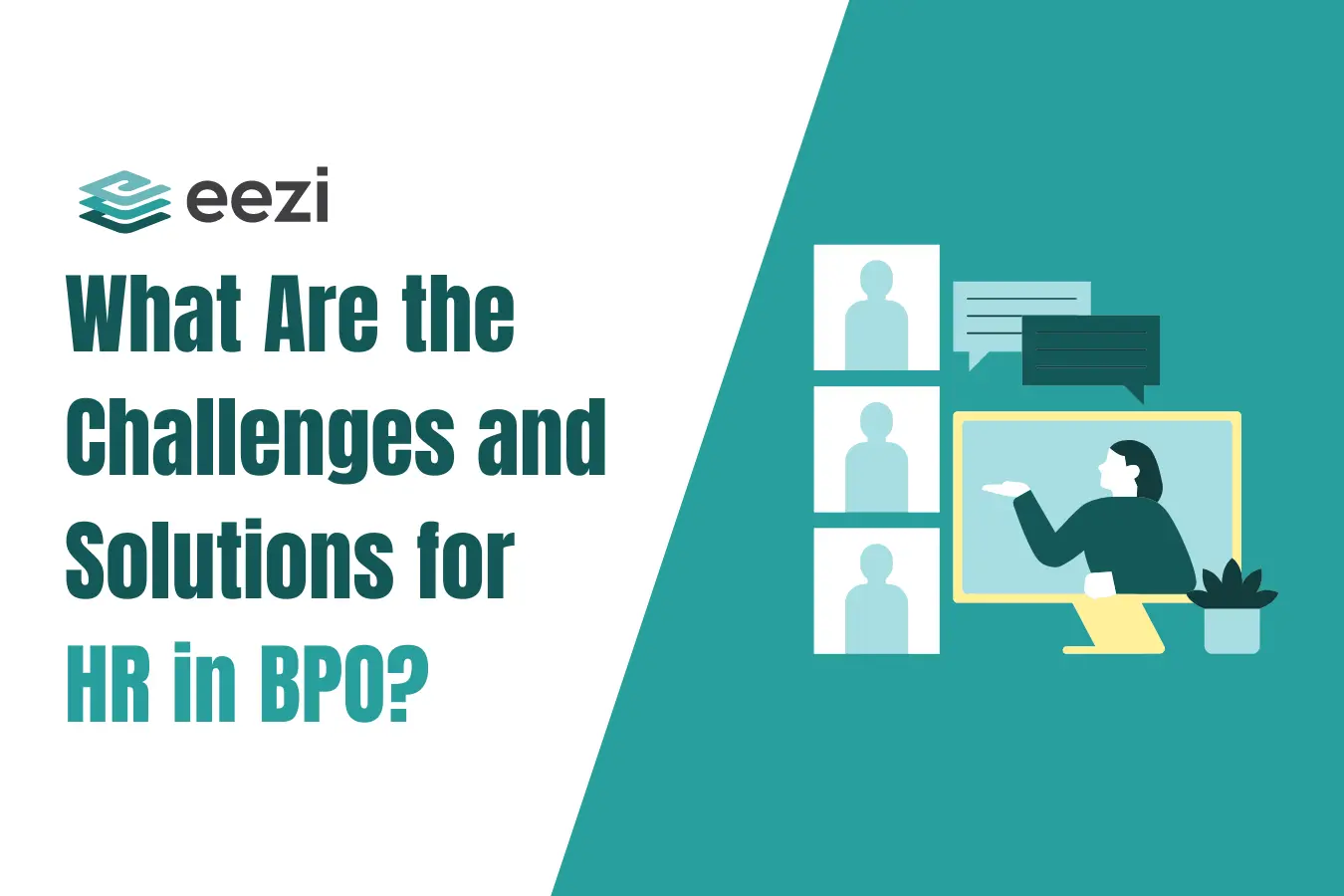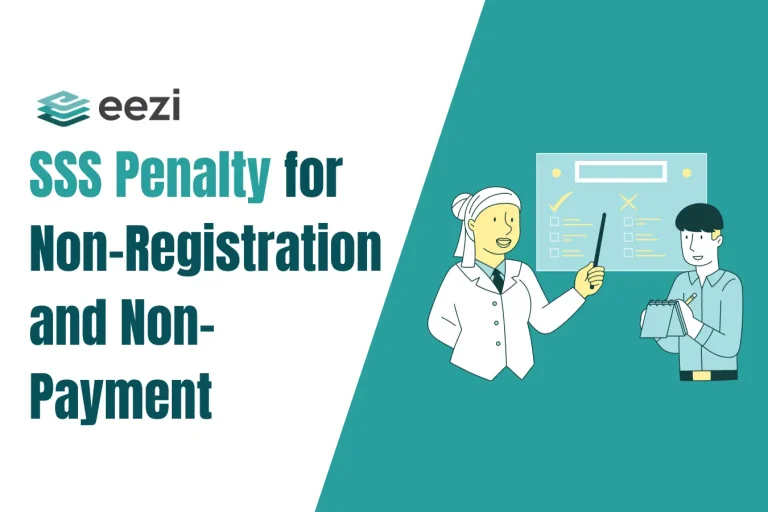What are the common challenges and solutions for HR in BPO?

The business process outsourcing (BPO) sector is one of the industries with the fastest growth rates. With this growth also comes the need for faster payroll and overall human resource management. This is where payroll solutions and services come in.
Usually, outsourcing entails contracting out your company’s operations to a foreign or domestic third party. This risk mitigation and cost advantage is especially helpful for the BPO industry’s fast development.
However, the intense competition in this field and the market’s rapid growth present specific challenges for HR BPO management. Highly demanding customers, limited budgets, erratic work schedules, and satisfaction are just a few of the challenges this industry must deal with.
Below, we’ve outlined a few of the usual challenges and their respective solutions for the BPO or human resource outsourcing industry.
What are the most challenging tasks of HR in BPO?

The technological, social, and economic landscapes are always changing. Human resource departments thus face a variety of challenges.
How do HR professionals handle issues like reduced productivity and employee retention?
This is where human resource development becomes beneficial. Human resource development seeks to put people first by enabling them to advance their abilities, knowledge, and skills via mentoring, coaching, and training.
In order to assist them in identifying their areas of strength, and growth, and developing a strategy for their career advancement within the company, employees may also have access to personal development plans and career advice sessions.
Companies will eventually gain from having a better workforce and be able to accomplish their goals. Effective HR management is still influenced by numerous concerns, even though human resource development can help with some HR challenges.
The following are some typical HR challenges and solutions to help employers in resolving these issues:
Adherence to labor rules and regulations
One of the most important aspects of HR management is probably compliance with employment-related laws. There may be legal action, fines, and penalties for noncompliance. These could be harmful to the finances and reputation of an organization.
Ensuring rigorous observance of labor laws, data privacy laws, and health and safety rules are just a few of the applicable laws and regulations that must be followed in the letter.
For example, improper implementation of health and safety guidelines may result in accidents and injuries at work. These incidents could affect the company’s overall performance and reduce employee morale, in addition to any possible legal measures the business might encounter.
HR professionals must be knowledgeable about all applicable laws and rules. They need to have at least one employee that keeps track of any newly submitted rules and regulations as well as routinely monitors any revisions to existing ones.
They should examine and confirm that workplace policies are current and compliant with current laws and regulations in close collaboration with legal advice. Finally, in order to guarantee that employees are knowledgeable about the company’s policies and procedures, they ought to hold frequent training sessions.
Prioritizing employee health and safety first
Any organization’s HR department should place a significant value on the health and safety of its workers. The function of human resources professionals is vital in guaranteeing that appropriate protocols are implemented to enhance the welfare of workers.
Make regular risk assessments to find any workplace dangers. Additionally, create emergency response strategies and train staff members. Additionally, you can encourage a healthy work-life balance by putting in place flexible work schedules, such as allowing remote work when it is practical.
Change management
Any company must expect to experience change and adapt to changing business circumstances.
However, change management presents a number of challenges, including:
- Resistance to changes. Employees may react with uncertainty to new changes in the work environment.
- Lack of clear objectives. Any changes made to an organization must have objectives for the change to be implemented.
- Not enough resources. Anytime new initiatives are put into place, more staff, money, and resources are needed.
The process of managing change is intricate and multifaceted. As a result, HR needs to have the know-how and abilities to handle changes successfully.
Establish clear goals and objectives by closely collaborating with HR department heads and top management. While making adjustments, give staff members assistance and training. HR may evaluate the effects of change and gauge its efficacy using measures like employee engagement and productivity.
Retention techniques to keep your best employees
HR professionals and HR managers employ retention tactics to maintain their top talent’s commitment, motivation, and engagement with the organization.
Furthermore, retaining great talent guarantees that the company can meet its long-term objectives and maintain a steady workforce.
The majority of employee retention tactics are based on different HR tactics. Let’s examine a few examples of relevant HR strategies:
Merit-based
Based on an employee’s performance and contributions to the company, HR can put up a reward system. Bonuses, promotions, or other forms of employee compensation are available to any worker who meets or beyond expectations.
By offering prospects for career growth, this tactic can encourage other staff members and maintain the motivation of top performers.
Training and development
It turns out that training current or new employees is more efficient than employing highly qualified candidates.
Encouraging top talent to grow might make them feel more devoted to their own development and more invested in the company.
Employing this tactic can also aid in closing skill gaps within the business, enhancing productivity and overall performance.
Communications
Making room for open discussion is another successful employee retention tactic. It not only keeps workers informed and involved in business operations, but it also fosters a sense of value and camaraderie among them as fellow employees.
This tactic includes giving thorough feedback on an employee’s work, appreciating their significant contributions, and creating chances for them to advance professionally and as leaders.
Performance management
Performance management’s main goal is to give employee and organizational performance some structure, direction, and evaluation. At the beginning of the fiscal year, train managers used to set organizational goals and expectations for behavior in the workplace.
In a dynamic work environment, where organizational needs and individual skills vary over time, this has been shown to be unsuccessful. Furthermore, employees may become discouraged by performance management for the following reasons:
- Conventional project management is inflexible in response to evolving business requirements and fosters disagreement between organizational goals and worker expectations. This means that this program cannot be altered.
- Feedback is given to staff members just once a year. This implies that they are devoid of chances to evaluate their work, obtain input from peers, and make prompt corrections.
- Encourage a corporate culture based on positivity, gratitude, and trust to reduce these difficulties. Employees are encouraged to continuously improve their abilities by forming these beneficial connections. Additionally, the organization’s basic principles ought to serve as the foundation for employee feedback and performance reviews.
For example, a business that emphasizes flexibility and agility may allow constant input since it motivates employees to act quickly in the face of changing conditions.
Compensation strategies to draw in and keep talent
HR departments must create compensation management plans that both attract and keep top workers, in addition to offering competitive salaries and benefits packages.
While conducting market research can assist HR in maintaining market pay norms for various professions, they need also take into account the following:
- Put incentive and bonus systems in place based on performance.
- Make sure top personnel receive competitive compensation that is consistent with their duties and roles by conducting regular compensation reviews.
- Discuss and openly address any issues pertaining to employee compensation.
Attracting and hiring the best talent
Organizations that want to create high-achieving teams must prioritize hiring and keeping great people. Train managers may accomplish this by utilizing a few of the following tactics to help them stand out in the market:
- Use internet channels and branding to advance the cultures and values of the company.
- Make sure the applicant has a great experience by expediting the recruitment processes, giving them regular updates, and interacting with them.
- To attract top professionals, provide attractive compensation and benefits packages.
Reevaluating the employee value proposition for the current workforce
In today’s workplace, workers want greater benefits and real assistance from their managers in return for their expertise, services, and information.
Business leaders can create flexible work settings, like offering the option for remote work and autonomous control over one’s schedule, to help generate effective employee value propositions. Additionally, they can foster social links by supporting team-building exercises and other programs that might improve communication and cooperation among employees.
Re-engaging disengaged employees
There are instances where workers fail to show up for work and give their jobs their all. This could occur for a number of reasons and be an indication of discontent inside the organization.
These may consist of inadequate acknowledgment, unfair remuneration, restricted prospects for employee growth, or inept leadership. Employee disengagement thereby affects morale, productivity, and team performance, which is problematic for the entire firm.
- Arrange one-on-one meetings to learn more about their concerns, gain insights, and collaborate on solutions.
- Acknowledge their skills, efforts, and successes inside the organization, and motivate them to work with other team members to get back on track. Additionally, keep an eye on their workload and, if you can, support them.
Employee experience
Fostering a great work experience for new hires and continuing until an employee chooses to leave the company is vital.
However, there are a number of reasons why it can be difficult, such as the fact that different people have varied requirements and expectations, that professional development prospects differ for each person, and that sustaining an inclusive culture while adhering to corporate objectives can be difficult.
Therefore, in order to resolve this problem, you must pay attention to employee input and utilize it as the foundation for future developments. Invest in internal tools that are easy to use to increase employee productivity and streamline operations. Provide a smooth onboarding procedure that will help new hires become proficient in all aspects of their work duties.
Emerging trends in HR management
Increasing use of AI
- Automation of Tasks: HR departments in BPOs are increasingly automating repetitive tasks using HR software, such as payroll processing, attendance tracking, and employee onboarding. This not only saves time but also reduces errors.
- AI in Recruitment: AI-powered tools are used in the recruitment process to screen resumes and identify the best candidates quickly, making the HR processes more efficient.
- Chatbots for Employee Queries: AI chatbots handle common employee queries regarding leave policies, benefits, and other HR-related questions, allowing HR professionals to focus on more strategic tasks.
Shift towards remote work
- Flexible Work Arrangements: Offering flexible work arrangements has become prominent, offering employees flexibility and a better work-life balance.
- Virtual Collaboration Tools: BPOs are investing in virtual collaboration tools such as Zoom, Microsoft Teams, and Slack to facilitate seamless communication and collaboration among remote teams.
- Remote Onboarding: Comprehensive remote onboarding processes and talent acquisition, including virtual employee training sessions and digital welcome kits, ensure new hires are effectively integrated into the company.
Take Away
HR professionals are among the most essential employees of a BPO outsourcing company. They play a crucial role in a long-lasting and successful activity and the required workforce.
However, the BPO industry has some distinct HR challenges. The high employee turnover rates, enhancing the work environment, assessing productivity, and compliance are a few of these issues.
With the abovementioned information, BPO firms and HR professionals can better understand and address HR challenges immediately. Also, adapting to these HR management trends is crucial for staying competitive in the dynamic BPO landscape.
Sick of the HR challenges and want to streamline your BPO work?
Simplify your business processes in one dashboard! eezi Analytics collects real-time data and delivers it intuitively and user-friendly. This helps you with the payroll and benefits administration, tax administration, performance management, and other HR administration work in one dashboard while tracking real-time attendance.



